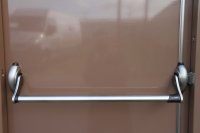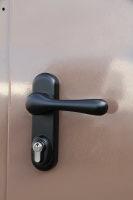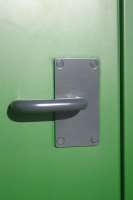Escape Furniture
Doors on escape routes need suitable hardware to allow the buildings' occupants to escape easily and quickly. Different types of users, the capacity of the room, and the likelihood of panic situations developing, will determine whether panic bars, push pads, or mortice escape locks are suitable.
We would strongly advise against using thumbturns in escape situations, as they are not considered safe, needing more than one operation to open a door. Just use them for locking or unlocking a door without a key.
Escape hardware should only be selected or specified after carefully considering the intended usage, and studing the relevant legislation. In practice, the principal choices are: to decide whether people are familiar with the doors, and if a panic situation is likely to develop. Specifiers should take professional advice when selecting panic hardware, but the following excerpts from some of the relevant standards are offered for guidance. Other standards and regulations may apply.
- BS EN 179: 2008 Emergency Exit (push pads and mortice escape locks), “For use on escape routes where people are familiar with the exit and its hardware and therefore a panic situation is most unlikely to develop.”
- BS EN 1125: 2008 Panic Exit (panic bars and touch bars), “For use on escape routes in public buildings, places of public entertainment, shops etc, or those that have to be operated in a panic situation”
- The Building Regulations 2010, Approved Document B1, 5.10 Doors on escape routes, 5.11 5.12 Door fastenings, 5.14 Direction of opening
Panic bars, touch bars and push pads can have one latch point or multiple latches. Heavy duty security versions are available. Panic bars, touch bars and push pads must be used on outward opening doors.

Stainless steel panic bar
For doors where entry is needed as well as exit, outside operators can be added.


If you're not sure whether or not you need escape doors, then please contact us. We will be happy to advise.


 +44(0)1522 693522
+44(0)1522 693522 info@doortechnik.co.uk
info@doortechnik.co.uk